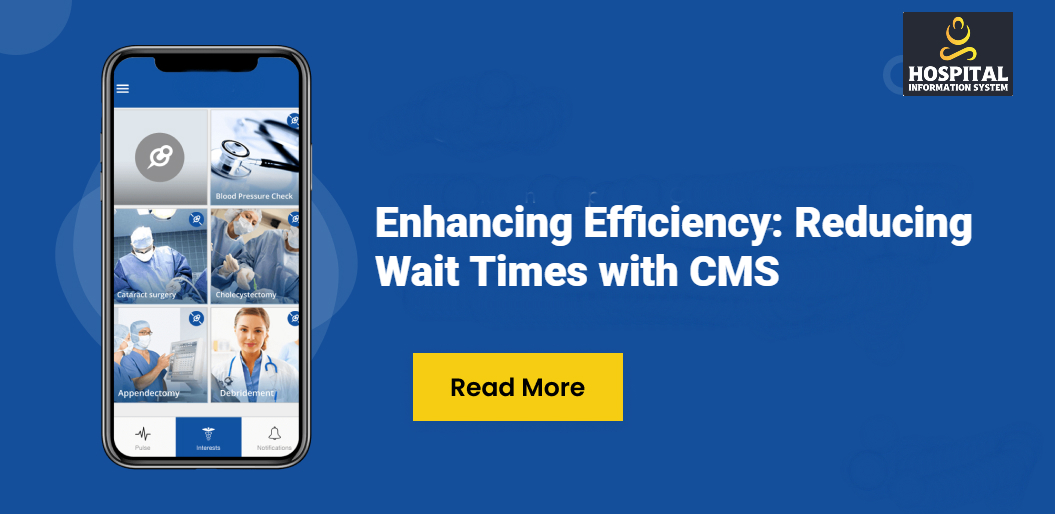Enhancing Efficiency: Reducing Wait Times with CMS
Reducing wait times has become an urgent priority in the healthcare industry, where efficiency is crucial. Patients now demand prompt and efficient care, and healthcare providers strive to meet these expectations. The need to minimize wait times has sparked the significance of patient management systems. These systems play a crucial role in streamlining processes, improving communication, and optimizing resource allocation, thus revolutionizing the delivery of healthcare services. In this blog, we will explore software's vital role and importance for patient management in establishing reduced wait times. We will delve into the benefits they offer, the challenges they help overcome, and the strategies for their effective implementation. Join us as we uncover how these systems can transform the patient experience and enhance overall healthcare efficiency.
Lowered Waiting Time and the use of a Patient Management System
Imagine a world where patients no longer have to wait hours in crowded waiting rooms, anxiously watching the clock tick by. In this world, healthcare providers can offer prompt and efficient care, ensuring that every minute counts. This is the power of reducing wait times in healthcare.
For patients, shorter wait times bring a sense of relief and reassurance. They feel valued and respected when their time is considered valuable. With reduced wait times, patients experience improved satisfaction and a heightened trust in their healthcare providers.
By maximizing patient throughput, healthcare providers can serve a larger number of individuals within the same timeframe. This leads to improved resource utilization, as fewer resources are tied up in long waiting periods.
Recognizing the importance of reduced wait times, healthcare providers are increasingly prioritizing the implementation of the patient management system. These systems revolutionize the entire care process by improving communication, streamlining workflows, and enhancing overall efficiency. By leveraging technology and embracing innovative solutions, healthcare providers can create an environment where wait times are minimized, and the focus is squarely on delivering exceptional patient care.
Challenges Addressed by Patient Management Software
Clinic Management Software addresses various challenges that contribute to increased wait times, effectively improving the healthcare experience. Some of these challenges are:
Streamlining processes: Paper-based systems in the healthcare industry give rise to inefficiencies, errors, and delays in managing patient information. These systems automate the processes, reducing paperwork and streamlining workflows. This ensures smoother operations and faster access to care.
Enhancing visibility and coordination: The absence of a centralized system can pose challenges for healthcare providers to obtain a comprehensive overview of patient flow, leading to confusion and potential delays. The software offers real-time visibility, enabling providers to track patient progress and coordinate effectively among different departments and care providers. This streamlines communication reduces bottlenecks and minimizes waiting times.
Improving communication channels: Insufficient communication among healthcare professionals can result in miscommunication, redundant tests, and care delays. With this solution to patient management, bridging communication gaps by providing secure and efficient channels for sharing relevant patient information promptly is simplified. This promotes effective collaboration and ensures that the right information reaches the right people at the right time.
Optimizing resource allocation: Poorly allocated resources contribute to longer wait times. The clinic software optimizes resource allocation by tracking patient flow, identifying bottlenecks, and enabling proactive adjustments. This ensures that healthcare providers have the necessary resources at hand, reducing waiting times and improving overall efficiency.
Increasing patient engagement: Engaged patients tend to adhere better to appointments, resulting in reduced no-shows and improved patient flow. Patient management software offer features such as appointment reminders, online scheduling, and personalized communication, enhancing patient engagement. By empowering patients to actively participate in their healthcare journey, these systems contribute to shorter waiting times and smoother clinic operations.
Conclusion:
In conclusion, implementing a patient management system is crucial to reducing wait times and enhancing the efficiency of healthcare services. To reduce wait times, healthcare organizations should prioritize the adoption of CMS and leverage its capabilities. Assessing the software workflow, providing appropriate training, and conducting regular evaluations are a few strategies for the effective use of the software. Take the first step towards improved patient experiences by implementing patient management software today.





Comments
Post a Comment